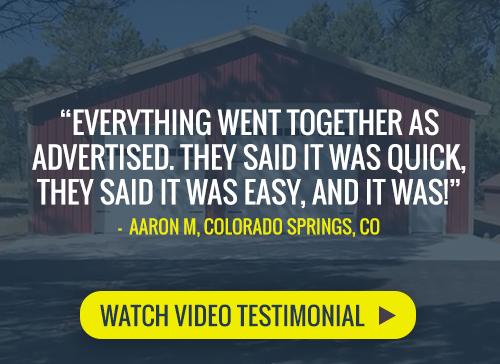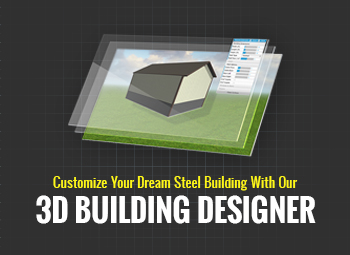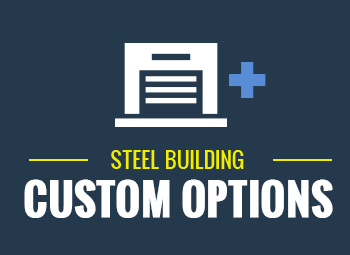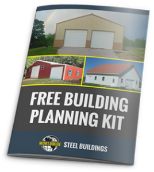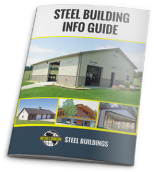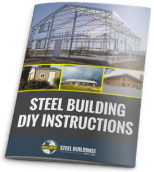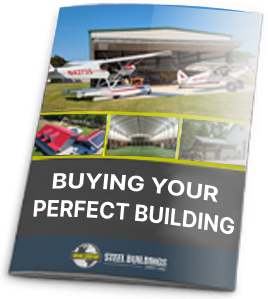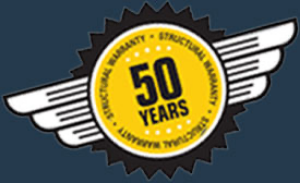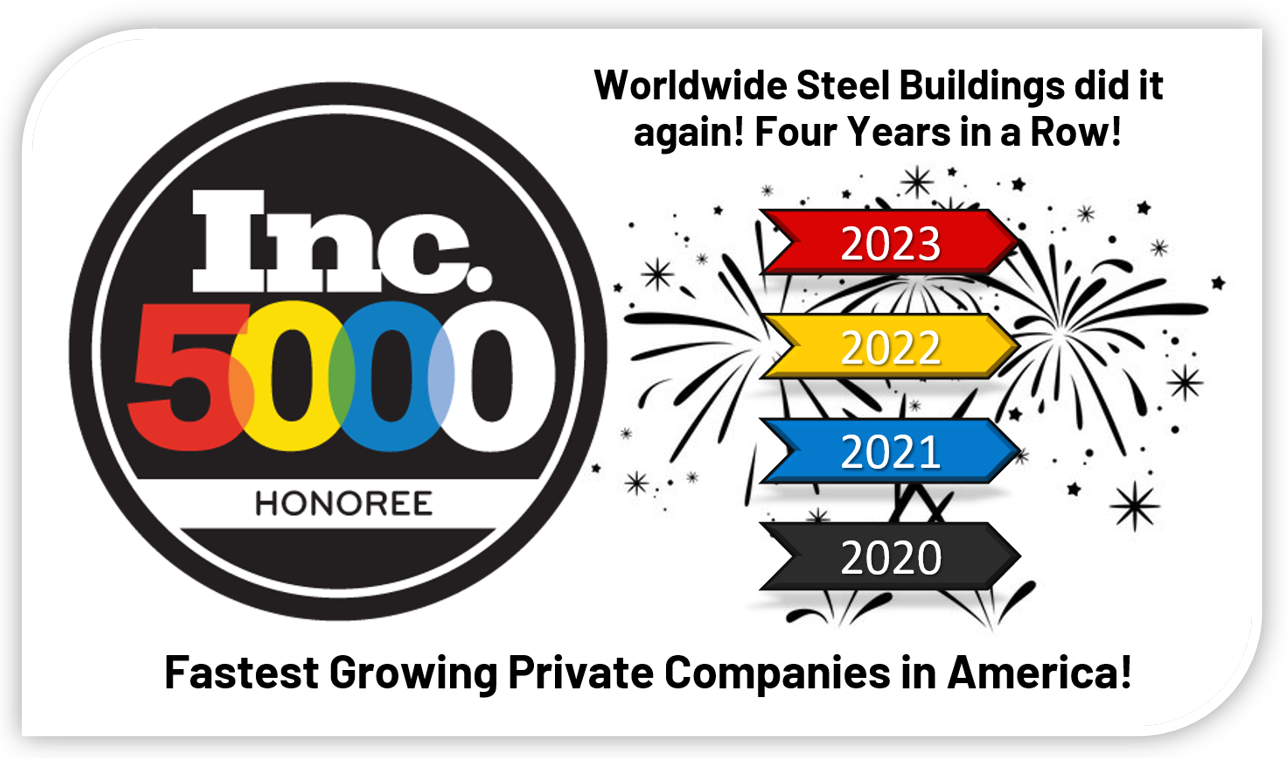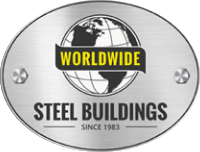Cattle Confinement Barns
Background
If you’re like many of Worldwide Steel Buildings’ customers in the midwest, you’re considering a steel building for your cattle barn. And when you’re designing confinement facilities for living creatures, there’s even more to consider than when you’re constructing any other sort of metal building.
The business of raising livestock is very competitive. Building cost effective housing is an important aspect of this competition. Careful design and proper maintenance is a very important part of keeping the overall cost of metal animal confinement buildings as low as possible.
Working with Worldwide Steel to build a metal cattle barn means working with experts who care about your building, your business and your animals. We are well-versed in manure management, feed efficiency, cattle comfort, animal health and all the aspects of your cattle barn, and can help you design the metal building that is best suited for dairy or beef cattle.
Corrosion Problems with Animal Confinement Buildings
For many types of livestock, including cattle, confinement facilities are home. That means the animal waste and waste decomposition by-products generated in these buildings create corrosion. That corrosion causes problems for both metal building materials and animal health.
By default, animal confinement buildings are highly corrosive environments. The waste products generated in cattle barns contain sulfites, ureas, amines and other corrosive agents. They are rich in bacteria that oxidize the waste materials to organic acids that readily attack aluminum, iron, and zinc. Dust typically carries bacteria to all interior areas of the building. The constant high humidity from the animals, the waste and the cleaning water adds to the corrosivity of the environment.
Direct contact of the cattle barn panels with animal wastes will quickly corrode and perforate the steel. The moisture will carry the corrosive ingredients through any paint film, corroding painted steel. Even building panels that do not come in direct contact with animal wastes are subject to extremely corrosive conditions. Waste gases and gases from waste decomposition, when combined with water, form a very corrosive solution. Water condenses on cool areas, absorbing these corrosive gases and bacteria laden dust from the air. The resulting solution severely attacks the metal coating, even through paint.
The most severe attack comes on the underside of the roof, in crevices, at the bottom of sidewalls, near exhaust ports on the sidewalls and roof, or between insulation and an exterior wall. These areas dry slowly because of poor air circulation or severe condensation.
Exterior areas near ventilation ports are exposed to much the same corrosive atmosphere as interior areas with only the natural washing effects of rain to cleanse them.
Luckily, working with Worldwide Steel means mitigating these risks. Elements integrated into the barn design, like slatted floors and monoslope building designs, alleviate the worst corrosion potential. Our expert advice on additional cattle barn practices, like manure storage and bedding materials, can help diminish it even more.
Cattle Barn Building Design
The dominant factor in determining a confinement system’s corrosion resistance is the building design. Worldwide Steel almost always recommends a monoslope building for lack of corrosion and for the cattle’s well-being. While hoop bars can be easy to erect, they don’t have the longevity of a monoslope.The monoslope keeps the cattle protected from the elements while also offering excellent ventilation
Building design factors that affect the corrosivity of these environments include insulation, ventilation practices including slatted floors, and interior cleanliness. Corrosion in confinement buildings can occur on both the exterior and interior of roofing and sidewall panels, especially if badly-designed ventilation exposes some areas on the exterior of the roof or sidewalls to these corrosive fumes.
Insulation and Vapor Barrier
Rigid or batt insulation, combined with a vapor barrier, protects the inside of the panels from corrosive gases and keeps the building air temperature comfortable for the animals. Well-sealed joints and vapor barriers maintain moisture tightness such that corrosive vapors do not penetrate between the boards or batts and condense on the inside of the roofing panels.
The top and bottom sidewall and roof edges, as well as any cut edges, need a good vapor barrier because of the close proximity to fasteners. Condensation between the insulation and roofing is exceptionally aggressive because of the long drying time associated with small gaps. A designed gap between the insulation and wall allows easier drying, should moisture penetrate the system.
Because some minor leaking of the barrier always occurs, the use of blown-in insulation should be avoided. This material holds moisture well and dries exceptionally slowly when wet. Additionally, it settles and creates uninsulated pockets at the top of walls and sloped roofs.
In an environmentally controlled building, the use of a good insulation and vapor barrier system also helps reduce energy costs.
Ventilation
Any and all efforts to ventilate the corrosive fumes generated within an animal confinement building will reduce the severity of corrosion from these gases. The decreased concentration of the corrosive gases would make any leaks in the vapor barrier less of a problem. The dew point decreases with any decrease in humidity, causing less condensation.
The odor of a building is a rough indication of the ventilation’s effectiveness because the corrosive gases are very aromatic. Even for those with no experience in feeder cattle, beef barns, manure value or anything else livestock-related can smell the difference between a monoslope barn and a more enclosed, badly ventilated building.
Even in a monoslope barn, the use of stacks of discharge tubes to release the gases away from the building greatly reduces the corrosive effects on the building exterior because the fumes discharged with either power or natural ventilation could cause a corrosive attack on the exteriors in close proximity to the discharge.
Eave venting requires special attention to areas near the openings, such as the drip edge or cut edges. The underside of a vented overhang requires protection, such as an extension of the insulation and vapor barrier from inside the building.
Cattle Barn Material Recommendations
U. S. Steel recommends painted G90 hot-dip galvanized (G90 HDG) with a zinc phosphate treatment for animal confinement applications. The design factors above are the dominant factors in determining the building’s corrosion resistance. Improving building design is more cost effective than using heavier zinc coatings. Adequate ventilation, proper maintenance, good insulation and a vapor barrier provide enough protection so that interior corrosivity will not harm the steel. Painted HDG gives excellent exterior corrosion protection.
While GALVALUME Coated Sheet Steel has outstanding corrosion resistance in a wide variety of environments, including rural, industrial and marine regions. Atmospheric exposure for more than twenty five years has clearly demonstrated that it is at least two to four times more durable in these environments than G90 galvanized sheets. GALVALUME Coated Sheet Steel easily meets its twenty five-year warranty requirements, even in regions of acid rain.
In certain applications, however, the relative corrosion rates of materials change. One of these applications is animal confinement buildings for hogs, cattle, and poultry. In these environments, the corrosion of GALVALUME is more rapid than hot-dip galvanized. For this reason, U. S. Steel neither recommends nor warrants the use of GALVALUME Coated Sheet Steel in animal confinement applications.
Interior Cleanliness
The most important aspect of interior cleanliness is efficient removal of animal waste, especially from near cattle feeding areas. For those working in the barn and for cow-calf and other animal health, regular cleaning is ideal. The method and frequency of removal strongly affects the corrosivity of the atmosphere. In an environment as conducive to bacterial growth (including e. coli) as animal confinement, keeping the building clean is easier if the bacterial growth is not allowed to progress. Frequent cleanings will require less effort than infrequent cleanings. Regular cleaning of all areas of the building keeps the corrosivity of the waste and the bacteriological by-products to a minimum. Cleanliness is not just a corrosion issue, it is a health issue for animals and workers. That’s one of the biggest reasons the USDA (and other agencies) advise against raising cattle in an open feedlot, which is prone to manure runoff, even though it is inexpensive.
Waste Removal
Cattle barns designed for effective manure management are not only more pleasant to be around for the people working them, but are much better for animal health.
The most aggressive manure management systems involve water mixtures, or slurries, often used in hog confinement to flush the wastes away from the building.
Often in poultry, broiler or breeder houses, dry wood chips or sawdust hold the animal wastes until replenishment or replacement. Many egg-laying operations keep the chickens in tiered cages from which the wastes fall to a lower level and are removed. The drier nature of poultry waste, together with improved methods for removal, make poultry houses somewhat less corrosive in nature than hog and cattle confinement buildings.
In some hog and cattle confinement buildings, a mechanical blade periodically drags the wastes to one end of the building for subsequent removal. This method increases humidity and the release of corrosive gases into the atmosphere.
Development of improved waste disposal systems will relieve some of the need for highly efficient ventilation systems without reporting to manure runoff. This will improve the overall cost effectiveness of the building. Bacteria decompose animal waste to amines and acids. This decomposition makes animal confinement buildings even more corrosive because these by-products can aggressively attack metal and are volatile enough to be in the air constantly.
Sites of corrosion can occur anywhere because the bacteria become air-borne and settle on surfaces from dust or mist. Any water can absorb bacteria and waste gases that will support growth of the bacteria. The most severe problems come in the less thoroughly cleaned areas, where corrosive waste and decomposition products can accumulate.
The most important steps in reducing bacteriological decomposition are an efficient waste removal system, a regular cleaning program and an easily cleaned building. Cleaning should be frequent enough that the waste does not accumulate. This depends on the rate of waste generation, the efficiency of the removal system and the efficiency of the previous cleaning.
Easily cleaned buildings will either be cleaner or make cleaning less of an effort. It involves not having water-trap areas, having good drainage capabilities via slatted floors, and minimal crevices. If good cleanliness is difficult to maintain, antiseptic cleaners can control bacterial growth.
Maintenance
The interior vapor barrier will occasionally need to be repaired in order to maintain its original barrier properties. Frequent cleaning could cause minor rips. Sealing tape could come loose. Normal wear could also cause holes. The exterior may show early signs of corrosion if the original venting design provided inadequate protection, such as unsealed vent-stack seams.
Prompt attention to breaks in the vapor barrier are especially important in cold weather as condensation is more likely. If moisture is trapped in the insulation, interior corrosion of the roof or sidewall will occur.
Mistakes or oversights in building design can result in severe localized corrosion. Diligent observation of the building can often catch these problems while there is still time to correct the problem. Addressing these issues promptly will prolong building life.
When you care about your cattle and your buildings, you deserve to work with Worldwide Steel Buildings. Our experts will talk to you about everything from the effect of weather on animal performance, including cold stress on light-weight calves, to how much space you need around your feed bunk.
